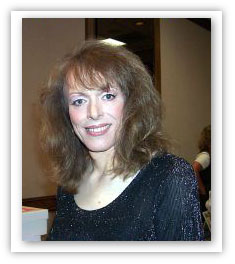
Game Designers Just Wanna Be Girls:
Interview with Jamie Faye Fenton
By Next Generation Online
In this NGO special, we explore one of the less talked about trends in the industry: the growing number of transgendered game designers.
June 21, 1999
What a surprise it was at the Computer Game Developer's conference six or seven years ago. Dan Bunten, fabled designer of M.U.L.E. and Global Conquest and other classics, was nowhere to be found. Coincidentally, an over six foot tall woman going by the name of Danielle Berry and bearing a vague resemblance to Dan was roaming the conference floor. At the time it was a shock, but everyone knows the story now: Dan had a sex change.
Okay, well, that's no big deal. If something happens once, it's a fluke.
Then there was the designer of the great 8-bit classic, Shamus, William Mataga. He recently wrapped-up work on a Color Game Boy version of that game and is looking for a publisher. Only he now goes by Cathryn.
If something happens twice, it's coincidence.
Then there's Jennifer Reitz, who's done game work for a number of companies, including Interplay. Yup, you guessed it, she didn't start life with a name quite so feminine as Jennifer. She now runs a site about transgender issues.
And video game geezers may remember a popular coin-op from -- good grief -- nineteen years ago: Gorf. Gorf's designer, Jay Fenton, later went on to create the hugely influential Macromedia Director, something used to create the majority of multimedia products over the years. Sometimes Jay is still Jay. Other times he's Jamie Faye.
If something happens four times, it's starting to be a bit peculiar. And this little tally doesn't stop at four, or even in the single digits. The names aren't important, but the numbers are telling.
If nothing else, the high occurrence of male to female sex changes within the profession of game designer is an interesting anomaly. Jamie Faye Fenton, who recommends this web site for more information on the subject of transsexualism, has offered some good thoughts on the subject over the years. A short talk with her shed a lot of light.
Do you have any theories about what would attract transgendered persons to game development in what appear to be disproportionately large numbers?
I think being transgender does give you a gift of imagination. I sometimes compare it to being one of the few people who have both an AM and FM radio in their car in a world where most people only get to have one type. There's another factor, which I call the nerd factor. When we are growing up, Transgendered kids tend to be socially isolated. They deal with this by both learning and seeking recourse in their imaginations. For example, when I was 11 years old, I constructed in my mind a vast society in which everyone was about half an inch tall. Sort of a giant imaginary model railroad.
Could the physical cause of transsexualism be directly related to high intelligence?
The physical causes are not well understood. The prevailing theory has neurological changes being triggered by prenatal hormonal events. Supposedly transsexual babies don't get masculinizing hormones and then develop "female brains." It is also believed that much of the neurological development in the later stages is subtractive. Maybe transsexuals grew better hardware to start with, but I suspect the nerd factor is more important.
When did you first notice that the percentages seemed higher than among, say, auto mechanics?
We have a support group here in Silicon Valley and one night several of us just showed up. It was something like three out of twelve people there. That's when I started keeping a list.
This higher percentage has been observed in other populations. For example: railroad fans. Supposedly many of the engineers that worked for NASA were also transgender. Of course, during those days, you were more likely to hide it.
How many pre or post-op transsexuals do you know of working in game development?
My personal list counts 15. Almost all of these have had surgery. I am one of the few exceptions (although that might change soon!). It's hard to keep track of who is "woodworking" -- that is, so deeply into their female lives that they don't want anyone to know about their past.
Do you suspect the actual numbers to be higher?
Yes. Many more are cross-dressers.
Does this strike you as odd, considering the over-the-top macho nature of popular games like Duke Nukem and Half-Life?
This is not surprising at all. Most transsexuals have struggled greatly with their predicament. One gambit is called hyper masculinity. A transgender person will try to adapt by joining the military or seeking particularly dangerous work. For example, the woman who was president of the local support group before me was in the Delta force antiterrorism unit. I know several former fighter pilots as well.
For my part, when I began game design I was very much part of the counter-culture. After several years I wound up probing the masculine proclivity for violence. I wound up playing a lot of paintball, acquiring a gun collection and a library of books on forensic pathology and homicide investigation. Ultimately, I was testing to see how much of the darkness I could hold. After I came out and accepted who I am, this paranoid spiral unwound.
It is, of course, important to note that most video game designers are not transsexual, and obviously most players are not!
My personal view now is like the closing credits of "Death Race 2000"-which makes the point that violence is what caused human intelligence to evolve and is innate. Now that warfare itself has become so terrible, acting out our capacities in gaming is a necessary sublimation.
[Editorial Note: This piece is intended to bring to light an interesting topic which hasn't received much press. We're not trying to delve into people's pasts and dig up dirt.]